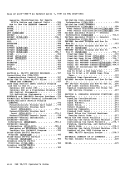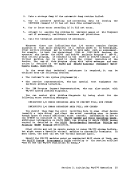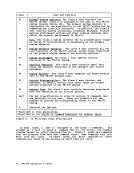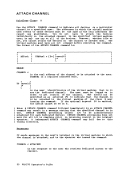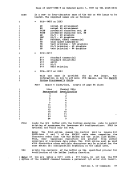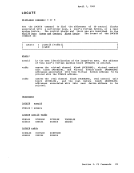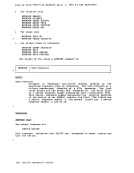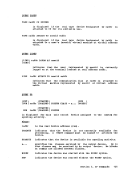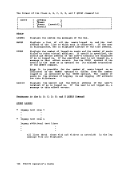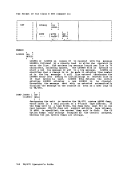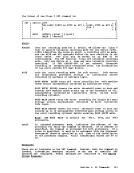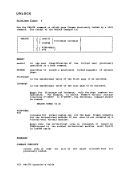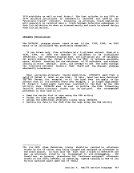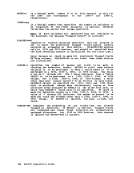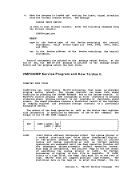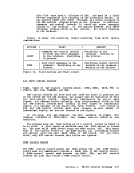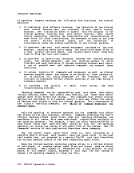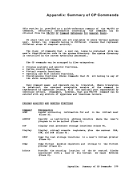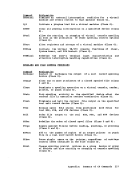page of GC20-1806-9 Is Updated April 1, 1981 by TNL GN25-0834 Mass Storage System Initialization If an !ISS port is attached to a virtual machine running as/vs with !ISS support and the !ISS communicator program is running in the virtual
.achine, the control program can cause automatic3330V volume mount and demount in response to any of the following: • 1 virtual machine logs on with a minidisk defined on a system disk
that is notmounted. The control program attempts to mount an SSS volume with the correct volume label. • 1 virtual machine logs
specifying a vo1id for aprogram again atteapts to
volulle label.
on having a dedicate directory statement
volume that is not mounted.The control mount an KSS volume with the specified • In operator ATTACH com.and is issued specifying a device address that
is anSSS 3330V address and volid. The control program attempts to mount the vo1id on the device address as part of the ATTACH
process ing• • The operator DEFINE command is used to change the feature (SYSVIRT or VIRTUAL) of a 3330V containing a mounted volume. The control program
demounts thevolume before completing the DEFINE process. • 1 virtual machine issues a LINK command to link to a virtual device
that is all or part of a3330V volume. The control program attempts
tomount the volume as part of the LINK process.
TheVK/370 control program does not issue orders directly to the mass
storage control(IISC). Bather, it passes requests to an as/vs system
with!ISS support that is operating in a virtual machine with an SSC port
dedicated to it. TheCS/iS system then issues orders to the KSC and
passes response information back to the control program.
In order for the installation to run with fullKSS support, an as/vs
system must beIPLed in a virtual machine. An KSC port must be
dedicated to this virtual machine. There are no special requirements
for thisIPL. The standard installation procedures for IPLing as/vs in
a virtual machine should be followed.Ifter the system is IPLed, the VII/370 communicator program must be started. If the standard
installation procedures as documented in theVK/370 System Generation-Guide have been followed, the communicator program is started
in the virtual machine through theOS/VS operator command:
start dmkmss {.pn]
The (.pn] operand is used only inOS/VS1 systems to specify the
partition inWhich the program is to be started.
The absence of error messages received fromDKKSSS indicates that KSS support is initialized. The communicator virtual machine may now be
disconnected if the installation desires.
There are five error messages that theD!lKKSS program can produce.
If any of these messages are received, then theVK/370 control program will not be able to communicate with the KSS. The messages are as
follows:
Section 2. InitiatingV8/370 aperation 17
.achine, the control program can cause automatic
that is not
specifying a vo1id for a
volulle label.
on having a dedicate directory statement
volume that is not mounted.
is an
process ing
demounts the
that is all or part of a
to
The
storage control
with
dedicated to it. The
passes response information back to the control program.
In order for the installation to run with full
system must be
dedicated to this virtual machine. There are no special requirements
for this
a virtual machine should be followed.
installation procedures as documented in the
in the virtual machine through the
start dmkmss {.pn]
The (.pn] operand is used only in
partition in
The absence of error messages received from
disconnected if the installation desires.
There are five error messages that the
If any of these messages are received, then the
follows:
Section 2. Initiating









